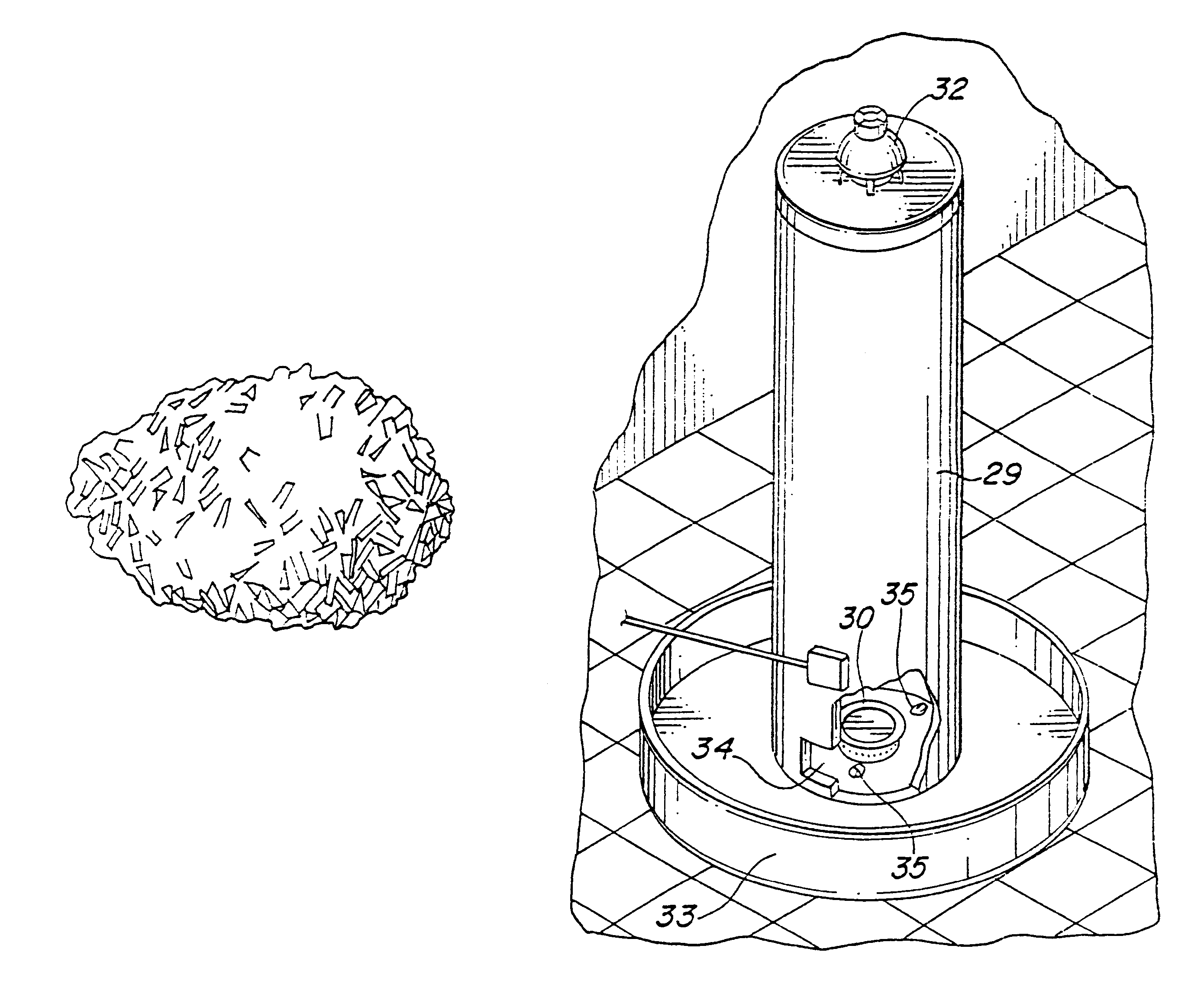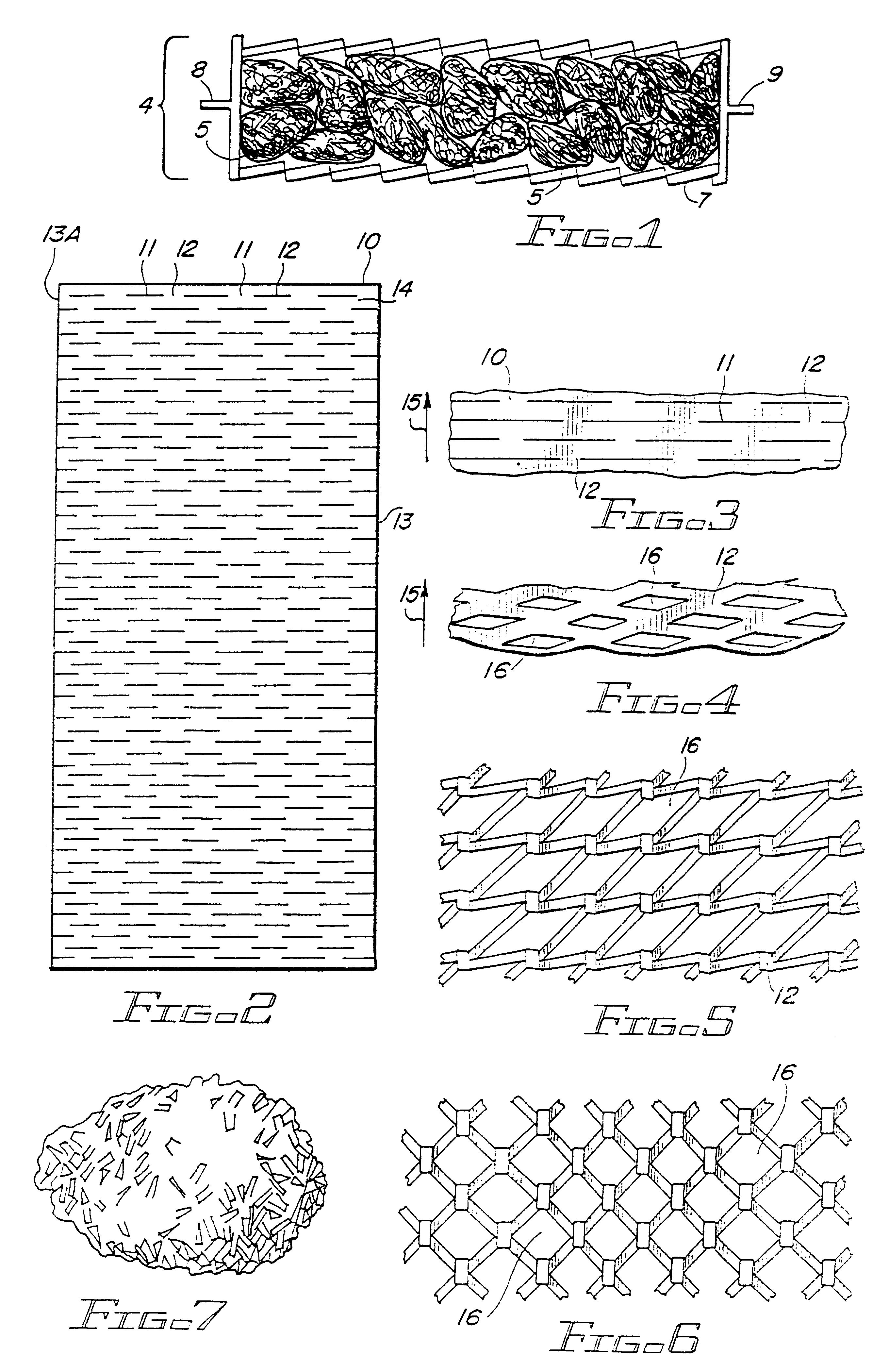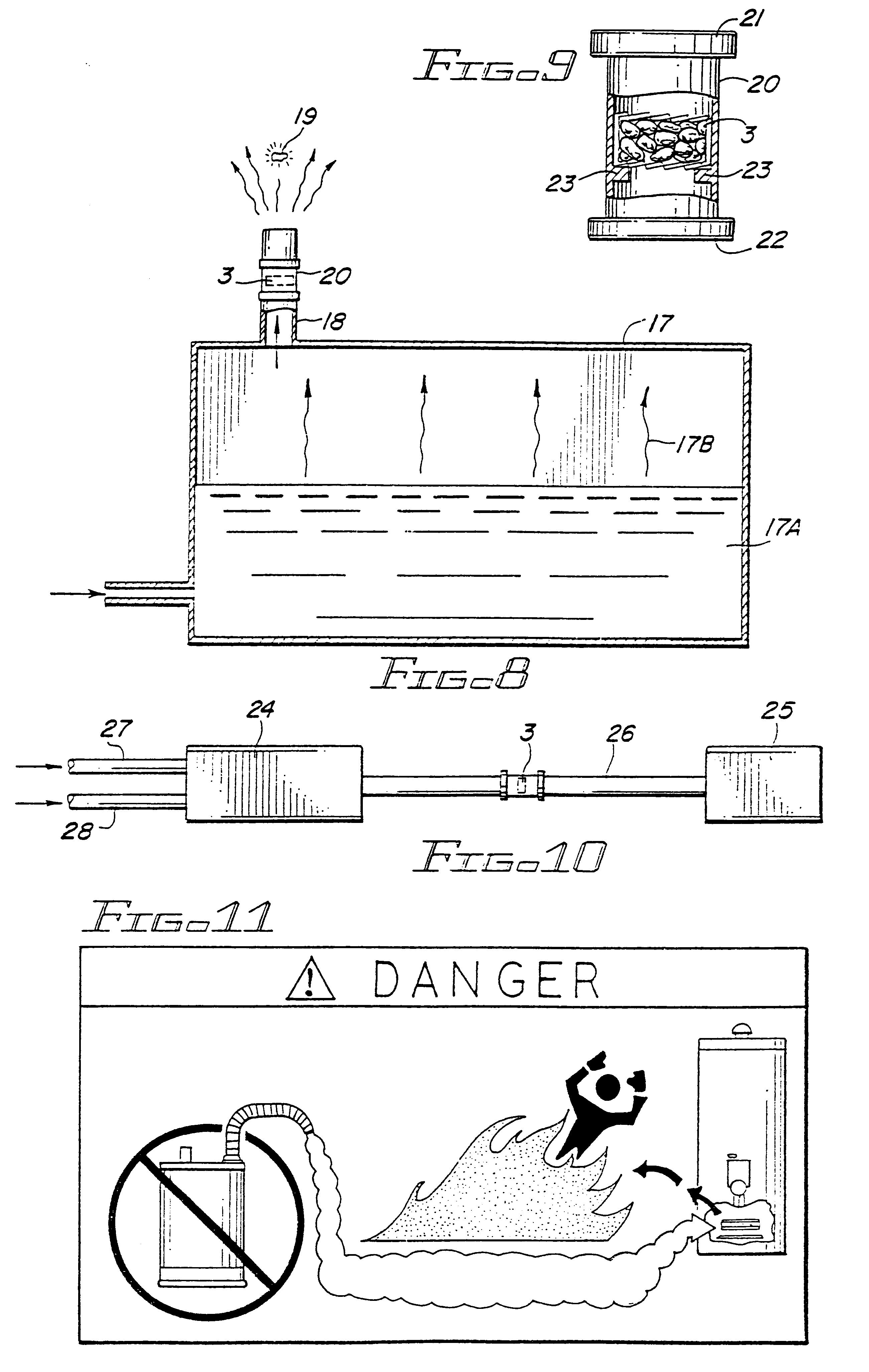Flame arrester
a technology of arrester and flame, which is applied in the direction of boring tools, steam boiler components, combustion process, etc., can solve the problems of increased cost, increased fire or explosion, and continual burning on the emergent face of the arrester,
- Summary
- Abstract
- Description
- Claims
- Application Information
AI Technical Summary
Benefits of technology
Problems solved by technology
Method used
Image
Examples
example 1
Description of Baseline Test--Without the Flame Arrester of the Present Invention
The residential water heater 29 utilized in this demonstration is shown in FIGS. 12 and 13. The heater had the following specifications:
Bottom-fired: natural gas, 33,000 Btu / hour
Standing pilot: natural gas, 1,000 Btu / hour
Burner: steel, multi-port, ring configuration
Water tank capacity: 30 gallons
Vent: central, 3-inch vertical flue
Cabinet style: "tall", 60 inches
The tank 29 included the standard components such as a main burner 30, a burner access panel 31, and a vertical flue vent 32. Positioned beneath the water heater 29 was a stainless steel moat 33, into which regular octane gasoline was poured to simulate an accidental spill. The natural gas supply line (not shown) was made of copper tubing to withstand the flames that resulted when the spill was ignited. Baseline tests consisted of exposing the as-received, water-filled, and operating water heater 29 to a deliberate gasoline spill to determine whe...
PUM
| Property | Measurement | Unit |
|---|---|---|
| diameter | aaaaa | aaaaa |
| diameter | aaaaa | aaaaa |
| elongation | aaaaa | aaaaa |
Abstract
Description
Claims
Application Information
 Login to View More
Login to View More - R&D
- Intellectual Property
- Life Sciences
- Materials
- Tech Scout
- Unparalleled Data Quality
- Higher Quality Content
- 60% Fewer Hallucinations
Browse by: Latest US Patents, China's latest patents, Technical Efficacy Thesaurus, Application Domain, Technology Topic, Popular Technical Reports.
© 2025 PatSnap. All rights reserved.Legal|Privacy policy|Modern Slavery Act Transparency Statement|Sitemap|About US| Contact US: help@patsnap.com



